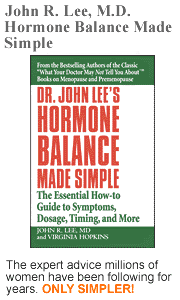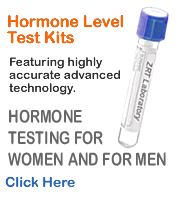|
|
||||
|
For suggestions on how to find a doctor in your area, please go to:  |
||||
|
Could Multiple Chemical Sensitivity Be The Cause Of Your Illness? |
||||
Interview with William J. Rea, M.D. William J. Rea, M.D. is a pioneer and the leading researcher and clinician in the field of environmental medicine and chemical sensitivity, which is the treatment of illness caused by food and environmental factors as wide-ranging as such as pesticides, air and water pollution, solvents and formaldehyde, gas stoves, fragrances, and electromagnetic fields. He is the director of the Environmental Health Center (EHC) in Dallas, TX, has published more than 150 papers and abstracts over the past 37 years, has lectured and had teaching appointments worldwide, and has received numerous medical awards. He has also written four volumes, Chemical Sensitivity 1, 2, 3, and 4, which are classics in the field. His books are based on the treatment at the EHC of 28,000 patients since 1974, and over 100,000 patients from around the world. His website is www.ehcd.com. JLML: Dr. Rea, we’re honored to have you as our clinician of the month. How would our readers know if they have environmental illness? WR: If they start getting odor-sensitive, for example to perfumes, gasoline, car exhaust, pesticides, cigarette smoke, newsprint—any noxious odor—they may have chemical sensitivity. You probably know a lot of people who have that. The next step in the progression of environmental illness tends to be a lot of allergies, and then people begin to develop multi-symptom disease that resists conventional treatment, such as PMS with colitis or spastic colon, heart arrhythmias, maybe asthma, or a combination of these things. Brain dysfunction is a common problem that we see—short term memory loss, imbalance, dizziness, vertigo. Anybody who has inflammatory disease of unknown cause can have environmental overload. These diseases can include Lupus, scleroderma, vasculitis, non-specific colitis, general indigestion, and arthritis. JLML: How about skin problems? WR: We see a lot of dermatological problems. Itching is a big one, adult acne is another big one, little red spots or spontaneous bruises, what we call chicken fat where the skin looks pock-marked, and eczema is almost always food-related. Psoriasis is sometimes. JLML: When women have multi-symptom environmental illness, do you find that the reproductive system gets involved? WR: Almost every time, and frequently it’s early on. Chemicals in the body settle in the organs of high metabolism first, and the uterus and the ovaries have high metabolic rates. The younger women get a lot of premenstrual syndrome, and the older ones experience early menopause or very difficult menopause. A lot of the chemicals that people are exposed to now are hormone mimics, so they’ll sit on the receptors and really mess up the normal hormonal flow. We see a lot of endometriosis that is chemically induced. We’ve saved a lot of people from surgery with our treatment. Researchers can take monkeys and induce endometriosis with dioxins and other chemicals. Most women who have endometriosis are very sick and we have to use all our treatments to get them back on track. JLML: Have you found that when women who have environmental illness get pregnant, their children suffer? WR: Yes, the children suffer. When the mothers are treated, the children do super, but the untreated mothers who aren’t recognized until afterwards, their children are always very difficult. They’re as bad as or worse than their parents. The fetus’ detox systems are not very good. The kidneys aren’t working well, the liver’s not working well, and the lungs aren’t working at all—those are the three big detox organs. The fetus will concentrate toxins. Say for example, the mother has one part per billion of the chemicals benzene or toluene, the baby will have two or three. JLML: So these kids are going to come out with their kidneys and liver and lungs already stressed because they already have a big load to work on before they even get up and going. What do you do for treatment of patients with chemical overload? WR: Number one is massive avoidance programs. Clean up the bedrooms, take out the carpets, no pesticides, no toxic paints or glues, no nail polish, and no plastics. We recommend organic food and safe water. Safe water means a good steel, ceramic and charcoal filter water system, or bottled water in glass bottles because the plastic bottles shed chemicals that are estrogen mimics. Or you can drink distilled water. If they’re allergic to specific things we’ll give them neutralization injections. We always do that with women who have become sensitive to their own hormones—that’s a powerful tool. We give them a dose that will provoke their symptoms, and keep going down to lower doses until the reaction is turned off. The third thing we do after avoidance programs and injections is a nutrition program, and fourth, if they’re still reacting we’ll put them in a medium- or high-temperature sauna and sweat it out of them, and give them massage and exercise programs under environmentally controlled conditions. JLML: Can menopause with its hot flashes and night sweats be a form of detoxification? WR: In a way it is because those people do seem to detox some, but it doesn’t tend to last. Some of them who have intense night sweats do detox, but the majority of people who have environmental illness don’t sweat and that is part of their problem—the stuff just accumulates. So you have to get them sweating again. JLML: What about women who can’t come to your clinic and get the injections? Can you instruct their doctors how to do the injections? WR: I’d be glad to teach any doctor who wants that information. I think it’s a wonderful tool. It’s a simple technique and I’ve written it up several times. JLML: What about scented products? WR: They are a real problem. For women who are sensitive we recommend washing soda, Borax, or Ivory Snow, instead of detergents. The worst ones are the air fresheners and fabric softeners—those things will kill you. JLML: What do you tell them if they live in the city and are allergic to car exhaust? WR: You can neutralize those reactions with injections, and they should get on a high antioxidant supplement program. JLML: Do you have a vitamin protocol that you can share with us? WR: I can give you an average daily recommendation but it may not be right for any individual: vitamin A 10,000 to 25,000 IU; vitamin E 400 to 1200 IU; multi-mineral and vitamin capsules 1 to 2; vitamin C anywhere from 3,000 to 7,000 mg; glutathione 600 mg; taurine 2 grams. JLML: I know that you consider formaldehyde a problem. Where do people come in contact with it? WR: Formaldehyde is second only to gas stoves and pesticides as a cause of chemical overload. Gas stoves cause a lot of depression and arthritis, pesticides cause brain dysfunction, neuropathies, heart problems, lung problems—almost anything. Then comes formaldehyde, which can be found in any synthetic fabrics, carpets, any foam rubber found in furniture or mattresses, and any house that has press board or plywood in it. If people are sensitive, they need to get rid of that stuff or move out. JLML: How can they tell if they’re sensitive to it? WR: They can sniff it and see. JLML: How about the gas stoves and heaters—gas heaters are very big in California. WR: We’ve pretty much phased them out in Texas, but some of the old houses still have them. I’d say get an electric stove and get rid of the gas heaters—the gas heaters are very toxic. They’re some of the worst. JLML: What comes after formaldehyde? WR: Then it tapers off quickly—degreasers, spot removers, urethanes such as a hardwood floor covering, any of the solvents like glues and nail polish remover. Polish remover is terrible stuff. JLML: How about sensitivity to electromagnetic fields, or EMFs? WR: Power lines, TVs and computers are the big ones. Then of course electric hair dryers, electric blankets, clock radios at the head of the bed. You should know where your power box is and be sure you’re not spending a lot of time near it. I’ve seen some people who are electrically sensitive who are sleeping with their heads on the other side of the wall from where the power box is located. They really get their bell rung! JLML: How would you describe what EMFs do? WR: The body functions on EMFs, so if you interfere with those, you interfere with proper transmission of those fields in the body. JLML: Are the hand-held gauss meters sensitive enough to give you a good reading of the EMFs inside of your house? WR: Yes, most of them are. JLML: How about vitamin deficiency? WR: If you have chemical sensitivity or overload, you always have vitamin deficiency. Sixty percent of patients with chemical overload have B6 deficiency, 30 percent have vitamin C deficiency, and 30 percent are deficient in vitamins B1, 2, 3 and 5. And many patients can’t tolerate the vitamins they need so they can’t begin taking them until they’re healthier. JLML: How can our readers contact you? WR: They can call our the Environmental Health Center at (214) 368-4132, or they can go to our website, www.ehcd.com. Reprinted from the John R. Lee, M.D. Medical Letter.
|
||||




